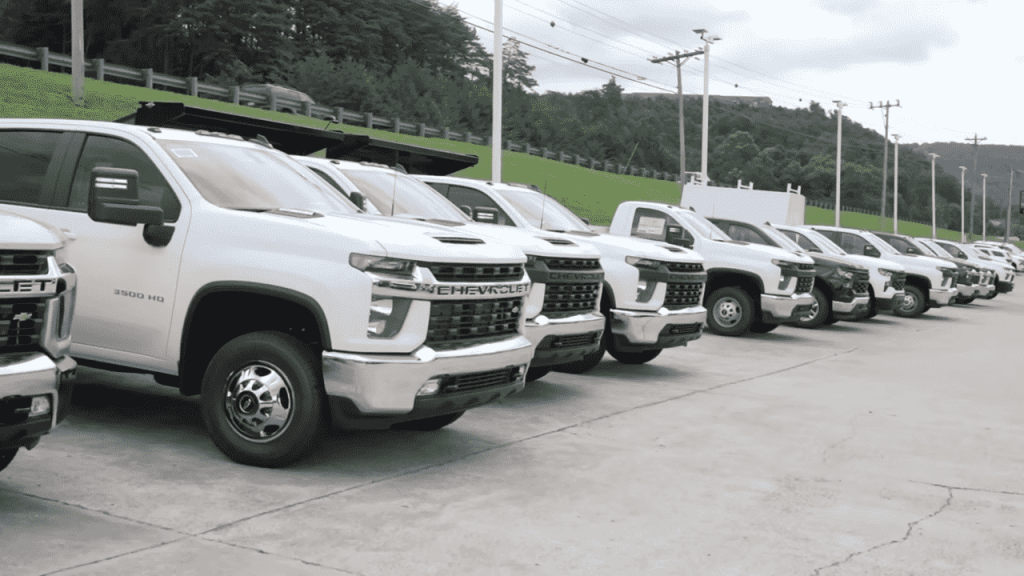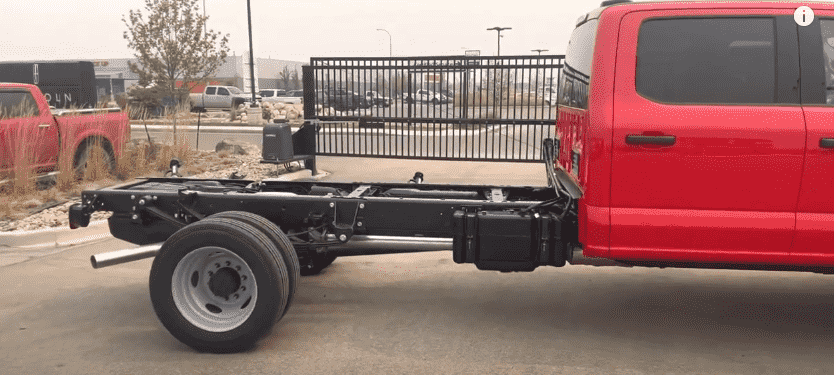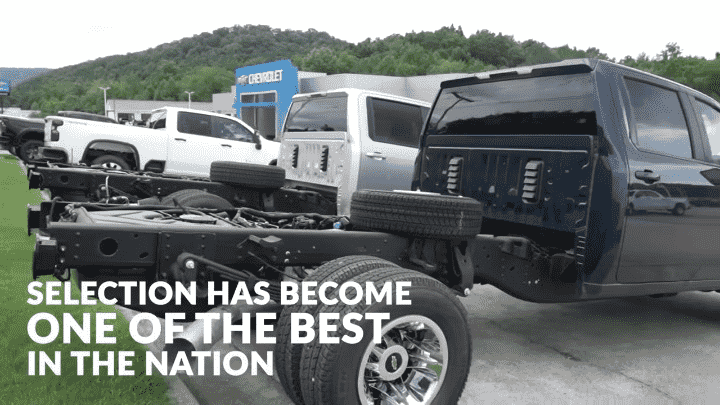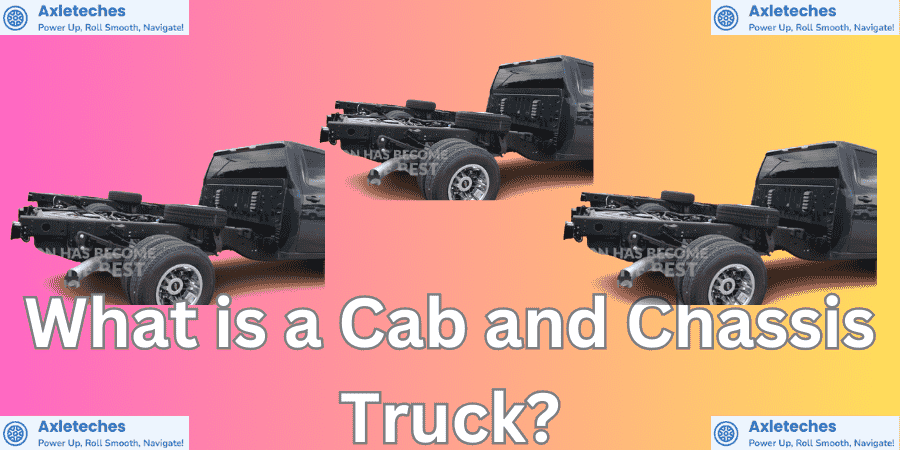Especially when you hear a label such as a ‘cab and chassis truck’ you may be asking yourself what that means exactly. As it has been expounded, a cab and chassis truck is just a set of wheels and a framework that can be tailored to any use. Depending on where you are in the world, it may seem strange that a cab and chassis truck does not arrive as a complete vehicle like a standard pickup truck, Rather, it arrives with the cab and the chassis frame only, that is, with nothing else. This makes it possible for different changes for a number of needs of a business, and is used widely in different fields.
Structure of a Cab and Chassis Truck
The Cab

The “cab” in a cab and chassis truck is the driver and or passenger enclosed section of the vehicle. It’s in this section that you’ll get to see the steering wheel and seats, among other expected commands of any vehicle. However, there is a correlation between cabs and the utilisation of the truck that might exist depending on the kind of truck that is in use. For instance, the type ranges from a standard single, an extended type, a crew, type depending on the available space and number of passengers.
The Chassis

The chassis is the main body of the truck from which various other parts are fitted or built in the truck manufacture process. It has a frame that is intended to transfer the load and bear whatever substance is put on the car. In this case, the following choices of chassis format are available depending on the requirements of the particular task: Some have been built for durability and rough use, while others allow relatively more versatility in the choice of bodies. One of the significant advantages of the chassis is that it can receive anybody at all – from a flatbed to a utility body, meaning that the chassis can be used as the basis for almost infinite applications.
Cab and Chassis Truck vs. Pickup Truck: Differences
If one takes a cursory look, one would be forgiven to think that a cab and chassis truck are just like any other pickup truck, but the two are very different in every aspect. Cab and chassis trucks have a basic structure, unlike a pickup in which the cargo area is already pre-built and, therefore, is mainly used to build from the ground up. This versatility means that it can be put to work in towing and hauling as well as a number of select commercial uses.
Common Uses of Cab and Chassis Trucks

Commercial Use
Cab and chassis trucks are the backbone of the business. They are employed at delivery services companies in the construction and transportation sectors because they can be modified to meet the required requirements. Need to transport goods in a box body or use the truck for construction in a dump body, well, these are robust trucks that are up to it.
Emergency Services
Emergency services cannot be done without cab and chassis trucks. Firefighter appliances, ambulance cars and rescue appliances come as cabs and chassis before being modified for usefulness. Due to features that allow for customization of the truck regarding specific emergency requirements, it is strategically instrumental in providing emergency services.
Recreational Vehicles (RVs)
Travelers who prefer life on the move can turn a cab and chassis truck into a mobile home by ordering a built-in RV. Unlike manufactured motorhomes, starting with a cab and chassis is allowed to be customized, and any motorhome built conforms strictly to the owner’s traveling requirements.
Advantages of Cab and Chassis Trucks
There are several key features that make cab and chassis trucks quite popular among buyers; one of them is the high degree of variability. Since they are available as a bare bones configuration, you can fashion the truck to your liking. They also appear to be more durable and strong and can easily outlast standard vehicles in matters related to operations that require more power. This is another advantage of the type since it can be used in several industries and fields of work.
Challenges and Considerations
Nonetheless, the greater the customizability, the more problems arise. First of all, one has to become aware that the price for customization of the cab and chassis truck could be relatively high. You also need to incorporate the parameter of maintenance, as these trucks could have periods of high wear as some components of them are unique. So, critical factors of the requirement should be checked before deciding to make the perception of the cab and chassis truck accurate according to your business or personal utility.
Customization Options for Cab and Chassis Trucks
Body Types
It is magical to know that you can purchase a cab and chassis and then proceed to get a body type of your preferred choice. Whatever your requirement – a flatbed, an utility body, or a box body – the choices are virtually inexhaustive. This feature makes it possible to modify the truck to suit the nature of a particular business or work to be done.
Suspension and Wheels
Suspension systems are adaptable; this depends on the purpose of the truck that one wants to install a suspension system. Other performance attributes that can be envisaged include reinforced suspension for many applications and shock absorbers for off-road applications, among others. The wheel size and material are also variable in relation to the load and terrain that the truck will have to face.
Engine and Transmission Choices
One can also customize the exterior and the interior of the car, and the final aspect of differentiation is the power train. The number of available engines may vary, as well as the transmission – all of this depends on your requirements. Whether you fancy economy or brawn, there is a combination that will appeal to your needs in the letter.
Conclusion
Therefore, cab and chassis trucks are essentially highly flexible and unique transport possibilities with exceptional potential for adaptation. Those in the construction business, emergency service, or anyone who wants a custom RV will find that these vehicles offer the versatility and rigidity required. Although these are some hurdles, one cannot ignore that the pros outweigh the cons, thus making the cab and chassis trucks a worthy investment for many industries.
FAQs
What is the main difference between a cab and chassis truck and a regular truck?
A cab-and-chassis truck is a customizable platform, unlike a regular truck, which has a fixed cargo bed.
Can I customize a cab and chassis truck after purchase?
Yes, you can add various bodies and features to a cab and chassis truck even after purchase.
How much does it cost to maintain a cab and chassis truck?
Maintenance costs vary, but regular servicing and upkeep can help manage expenses.
What industries benefit most from using a cab and chassis truck?
Industries like construction, delivery, and emergency services find cab and chassis trucks particularly useful.
Are there any special licenses needed to drive a cab and chassis truck?
Depending on the truck’s size and weight, you may need a commercial driver’s license (CDL).

